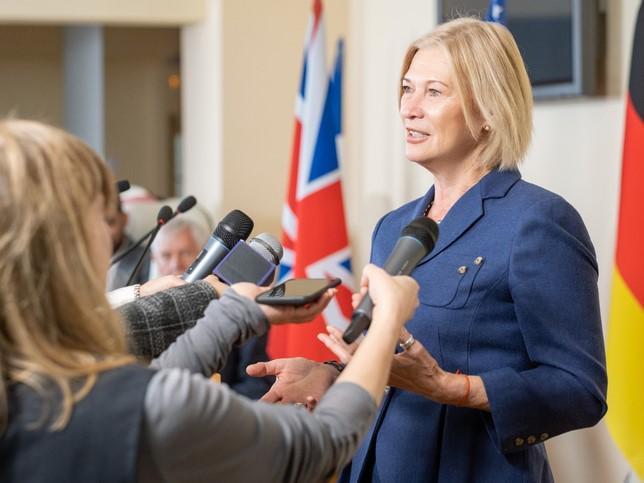Research valorisation is the process that adds value – social, environmental or economical – to research results. Knowledge is not only published but also transformed for users, customers and society, and such transformation calls upon knowledge and technology transfer (KTT).
KTT is part of the third mission of universities and is essential to research organisations. It requires a team, and it is risky and lengthy, but it can also be rewarding. All research fields, including humanities and social sciences, can engage in this process.
- What you don’t know about IP protections – but should
- Universities as business launchpads: creating spaces for enterprise to flourish
- How faculty support and entrepreneurial programmes can boost research commercialisation
Here’s how it works:
1. Choose your objectives
Your institution might have specific objectives and a strategy for research valorisation. Its frame will come from the legal context, national strategy and your institution’s policies. A successful KTT demands a strong alignment between the institution’s and the researchers’ objectives. Your motivation must be clear: is it to make your research more visible and “useful”? To generate collaborations and jobs? To make money? To create your own company? To attract good students? To boost your reputation? Or something else? The impact of research valorisation on your career recognition could be limited. Many researchers fear that valorisation will impede their ability to publish, but it’s not publish or valorise; you can do both in parallel.
2. Know your rights
As a creator of knowledge, you are an author (of publications, software, databases, algorithms or methods), an inventor (of technological solutions to technological problems) or a contributor to specific know-how. Your activity will create intellectual assets. Intellectual property (IP) is inevitable; it exists de facto (such as for software). So, you can try to ignore it, but it’s more professional to manage it. It’s all about appropriation and granting rights.
In most countries, the ownership of researchers’ creations goes to their employer. The creators nevertheless have many rights, including paternity (which is the right to request that communication about the creation mentions you as the inventor/creator) and financial incentives in the case of commercial exploitation; they are also often entitled to use research results IP to create a new company (spin-off). You must refer to your organisation’s legal framework and regulations.
To know more and make progress, you must contact an authority: your office in charge of research valorisation. Such offices may have various names. You may look for an office or department for valorisation, tech transfer, knowledge transfer, IP management or licensing. Those may be part of your organisation’s administration, the legal department, the research department or the rectorate or may even be in an external subsidiary. The common international name is KTO/TTO (knowledge/tech transfer office).
3. Build your team
The process of research valorisation is complex and requires skills that cannot be brought together in one person. You have to build a team that will provide you with all the necessary support for R&D activities, IP protection, understanding the users and negotiating. This team might include students, peers, partners, service providers and your KTO, which will oversee the whole process and liaise with relevant stakeholders. Your innovation ecosystem is crucial. Your transfer project might involve funding/innovation agencies, incubators, industrial or public partners or associations. Your core team must include a KTT professional (from your KTO), completed by an adviser or expert in the field of use of your results.
As the creator of those results, you are hugely valuable not only on the scientific side but also in identifying potential applications and partners.
4. Use the right tools
The first step is to inform your university through a simple formal procedure or document called an “invention disclosure”. Keep in mind that all sorts of results can be transferred, not only inventions. Although ideas circulate freely, several results can be protected: know-how, algorithms, inventions, devices, design, molecules or software, for example.
Explain what your results are, why they are original, what problems they address and the potential beneficiaries. Many KTOs have templates and can help you complete them based on your initial disclosure.
This is the basis for a “valorisation and exploitation plan”, which will help you throughout the process and can be used to get public funding for proof of concept, for example.
The IP protection strategy is a major issue. IP protection is compatible with publication (but you have to do it in the right order to avoid novelty destruction), open science and open-source policy. Protection can combine using IP tools (such as patents, copyright or trademarks) and maintaining confidentiality (secrecy). Discuss it with your KTO.
Once IP is protected, granting rights to a third party is possible through all kinds of licences, from a business use with financial objectives to a non-commercial use aimed at social impact, for instance.
The valorisation strategy must be built by the team, in accordance with your institution’s rules and policy. The pathway to effective transfer and use of your research results can include public funding, and sometimes the creation of a spin-off. Researchers are essential to this process, and support is available and necessary for you.
Christophe Haunold is head of the Partnership, Knowledge and Technology Transfer Office at the University of Luxembourg. He is also president of ASTP, the association of knowledge transfer professionals in Europe.
If you found this interesting and want advice and insight from academics and university staff delivered direct to your inbox each week, sign up for the THE Campus newsletter.




comment